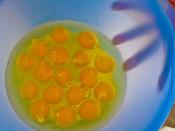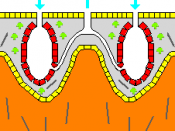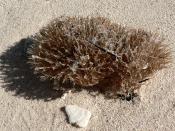The Phylum - Porifera
Sponges are the simplest of the multicellular animals. They are characterized by numerous canals, tunnels, and chambers that open to the outside by way of pores which giving this phylum its name. They are ancient but age isn't enough to prove that they are our ancestors.
Sponges do not have a nervous system, brain or any organs. Their body is defined by a system of cells and they have no shape. The cells have a very unique way of working together but they all work for the common good. Amoebocytes carry on other jobs. They can, for example, undergo developmental changes to turn into any other cell type that may be required. As a sponge grows, it weaves its glassy spicules together. Spicules help to give a sponge its form. They act as finger prints. Spicules are usually made of calcium carbonate or oxides of silicon.
Common animals are known to move, feed themselves, reproduce and care for their young. Sponges are the exception to all of this activity. They can reinvent themselves while no other animal can. They are animals, however they conceal their nature. Sponge's cells have many responsibilities. They carry out the all of the functions that organs in other animals carry out. Sponges and animals share one thing which is that their cells are held together by a protein known as Coelogyne..
Sponges feeding system is also very unique. They compete this task by sucking in water and filtering out the food particles. Sponges take in one ton of water only to receive one ounce of food. Sponges actively pump water through its tiny canals and chambers. The interior of the sponge is lined with flagellated cells called choanocytes. This helps the movement of which creates currents that force water through the...


